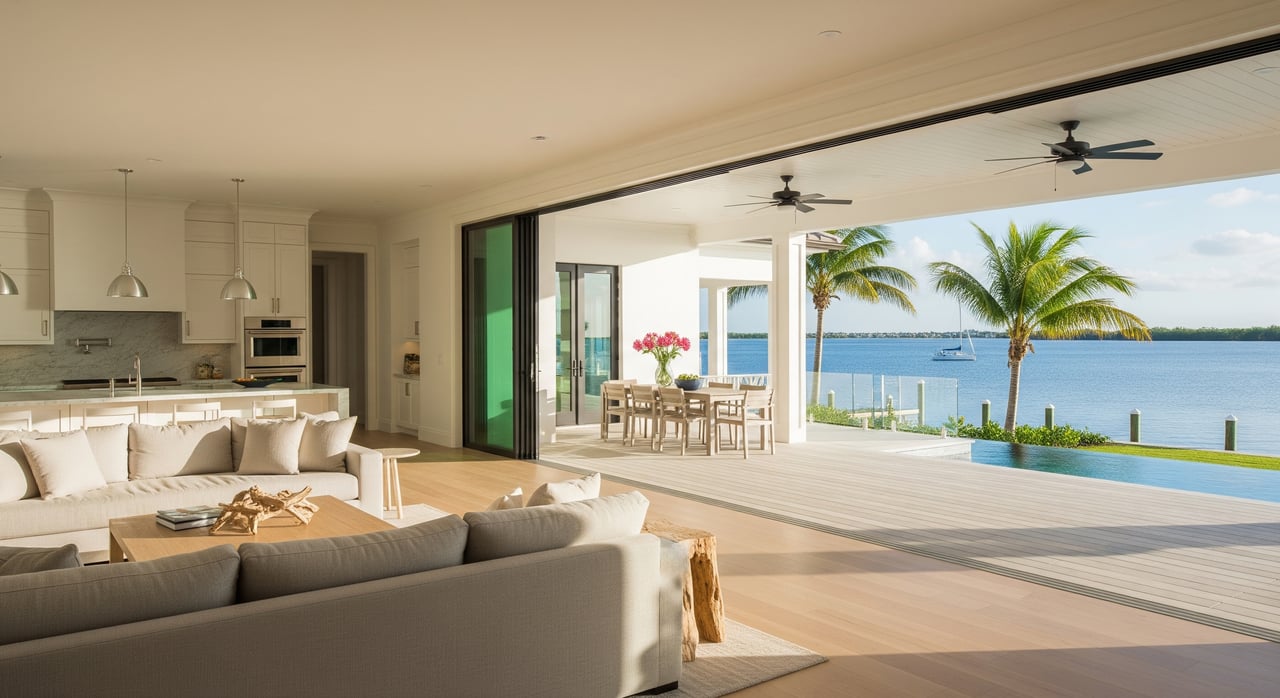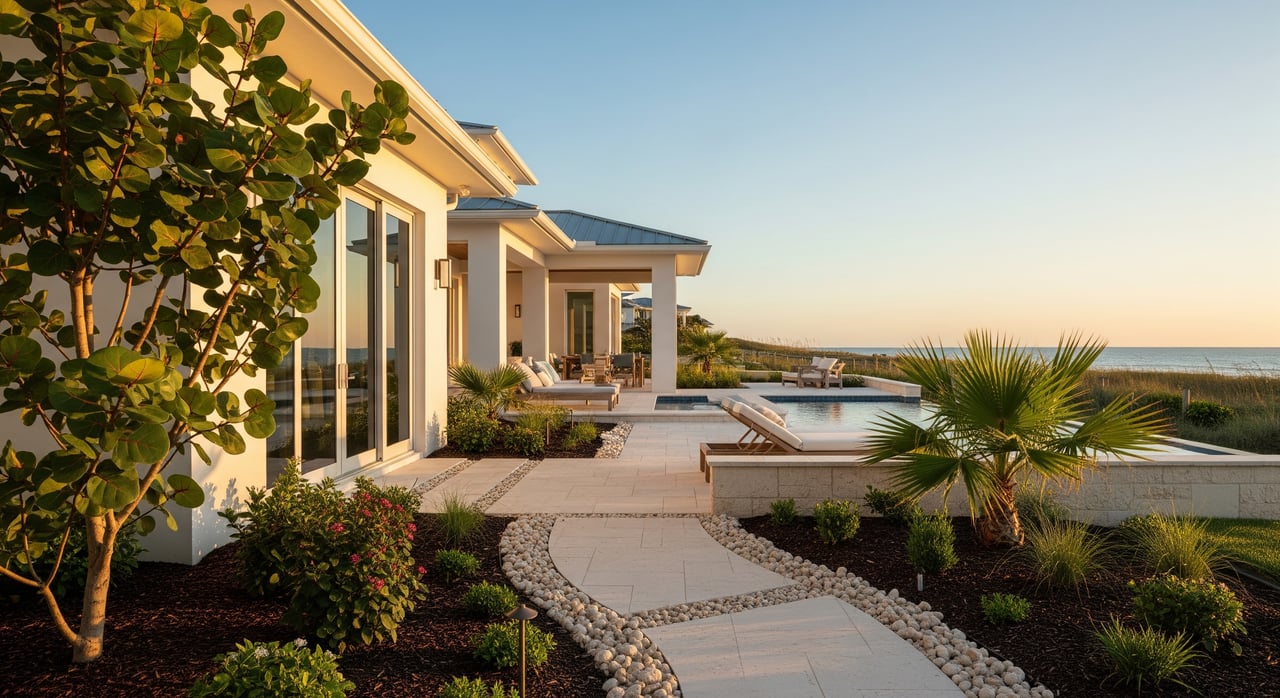Working from home has become more than a trend; it’s a lifestyle shift that calls for thoughtful design. Whether you run a business, manage meetings, or tackle creative projects, your home office should be more than just a desk and chair. It should be a place that fuels focus, encourages comfort, and helps you do your best work without distractions. If your current setup feels a little thrown together, you’re not alone — and the good news is, it’s never too late to upgrade your space.
This guide will walk you through the essential tips to transform your home office into a personalized, productive environment. From smart storage to mood-boosting lighting, here’s how to create a space where you’ll actually want to work every day.
Create a Dedicated Workspace That Sparks Productivity
Before diving into furniture styles or tech upgrades, start by carving out a dedicated space for your home office. A defined workspace helps your brain switch into “work mode,” creating a clear boundary between professional focus and personal time. Whether you're converting a spare room, sectioning off a nook in the living room, or building out a space above the garage, the goal is to establish a physical area that serves your workflow.
Ideally, your space should be away from high-traffic zones, loud appliances, or distractions. Even if you’re working with a small condo, try to claim a corner or use a room divider to signal that this space is dedicated to productivity and specific tasks. Choose an area that receives natural light if possible, which can boost energy, mood, and concentration throughout the day.
Ideally, your space should be away from high-traffic zones, loud appliances, or distractions. Even if you’re working with a small condo, try to claim a corner or use a room divider to signal that this space is dedicated to productivity and specific tasks. Choose an area that receives natural light if possible, which can boost energy, mood, and concentration throughout the day.
Prioritize Ergonomics for Comfort and Efficiency
An effective home office starts with comfort. You’ll spend hours sitting, typing, and looking at screens, so ergonomics should be a top priority. The right setup reduces strain on your body, prevents fatigue, and helps you stay energized longer.
Start with your chair. Look for one with proper lumbar support, an adjustable height, and a seat that encourages good posture. Your desk should be at a height where your arms rest at a 90-degree angle, and your feet should rest flat on the floor. Position your monitor so that the top of the screen is at or slightly below eye level to avoid neck strain. If you’re working on a laptop, consider investing in a separate keyboard and mouse to help with alignment.
Small upgrades like wrist rests, anti-fatigue mats for standing desks, or footrests can make a big difference in daily comfort. Test your setup, and make changes until it feels just right.
Start with your chair. Look for one with proper lumbar support, an adjustable height, and a seat that encourages good posture. Your desk should be at a height where your arms rest at a 90-degree angle, and your feet should rest flat on the floor. Position your monitor so that the top of the screen is at or slightly below eye level to avoid neck strain. If you’re working on a laptop, consider investing in a separate keyboard and mouse to help with alignment.
Small upgrades like wrist rests, anti-fatigue mats for standing desks, or footrests can make a big difference in daily comfort. Test your setup, and make changes until it feels just right.
Let Natural Light Take the Lead
Lighting has a powerful impact on your focus, mood, and energy. Whenever possible, position your home office near a window that offers natural daylight. Sunlight not only helps you feel more alert, but it can also reduce eye strain and even improve your sleep at night.
If your space doesn’t offer much natural light, you can mimic its effect by layering your lighting sources. Overhead lighting should be complemented with a task lamp for your desk, preferably one with adjustable brightness. Opt for LED bulbs with a color temperature in the daylight range (around 5000K) to simulate a crisp, clear work environment.
Also, pay attention to glare. Place screens perpendicular to windows instead of directly in front of or behind them to reduce reflections. Consider sheer curtains or adjustable blinds that soften the light without darkening the room.
If your space doesn’t offer much natural light, you can mimic its effect by layering your lighting sources. Overhead lighting should be complemented with a task lamp for your desk, preferably one with adjustable brightness. Opt for LED bulbs with a color temperature in the daylight range (around 5000K) to simulate a crisp, clear work environment.
Also, pay attention to glare. Place screens perpendicular to windows instead of directly in front of or behind them to reduce reflections. Consider sheer curtains or adjustable blinds that soften the light without darkening the room.
Choose a Color Palette That Keeps You Focused
Color can shape how you feel and perform in your workspace. Certain hues energize, while others calm or inspire creativity. Choosing the right color scheme for your home office can subtly guide your mindset and support your productivity goals.
Soft blues and greens promote calmness and clarity, making them excellent choices if your work involves problem-solving or detailed focus. Warmer tones like muted yellows or terracotta can evoke creativity and optimism. Neutrals like beige, ivory, or taupe are timeless and pair well with pops of color from décor or artwork.
Avoid colors that feel too intense or distracting, especially on large surfaces. You want to design a space that feels inspiring but not overwhelming. Accent walls, rugs, artwork, and accessories offer opportunities to introduce color without committing to bold choices across the entire room.
Soft blues and greens promote calmness and clarity, making them excellent choices if your work involves problem-solving or detailed focus. Warmer tones like muted yellows or terracotta can evoke creativity and optimism. Neutrals like beige, ivory, or taupe are timeless and pair well with pops of color from décor or artwork.
Avoid colors that feel too intense or distracting, especially on large surfaces. You want to design a space that feels inspiring but not overwhelming. Accent walls, rugs, artwork, and accessories offer opportunities to introduce color without committing to bold choices across the entire room.
Invest in Quality Tech That Supports Your Workflow
Even the most pristinely designed home office won’t be effective without the right tools. Invest in quality technology that supports your day-to-day needs and reduces friction in your workflow. This doesn’t mean splurging on every gadget — just choose wisely.
A reliable laptop or desktop computer is essential, and a large external monitor can significantly improve productivity if you work with spreadsheets, creative software, or multiple tabs. High-speed internet should be non-negotiable, especially if video conferencing or large file uploads are part of your routine. Add a quality webcam, a solid microphone or headset, and noise-canceling software if calls are frequent.
Cable management tools like clips, trays, and sleeves keep cords neat and prevent clutter. A surge protector with USB ports or a smart power strip can streamline your charging needs while protecting your equipment.
A reliable laptop or desktop computer is essential, and a large external monitor can significantly improve productivity if you work with spreadsheets, creative software, or multiple tabs. High-speed internet should be non-negotiable, especially if video conferencing or large file uploads are part of your routine. Add a quality webcam, a solid microphone or headset, and noise-canceling software if calls are frequent.
Cable management tools like clips, trays, and sleeves keep cords neat and prevent clutter. A surge protector with USB ports or a smart power strip can streamline your charging needs while protecting your equipment.
Keep Storage Smart, Stylish, and Within Reach
An organized workspace promotes clear thinking, while a cluttered one can interrupt focus and cause frustration. Whether you're working with a large office or a small corner, incorporating effective storage solutions is key.
Start by assessing what you need to store. Papers, office supplies, tech accessories, or reference materials all require designated spots. Use shelving, filing cabinets, rolling carts, or desk organizers to keep items off the floor and off your desk. Floating shelves are a great option for adding vertical storage without sacrificing square footage.
Choose storage pieces that match your overall aesthetic, whether you're going for modern minimalism or a cozy, lived-in look. Decorative boxes, baskets, or magazine holders can blend form with function. Keep everyday items within arm’s reach, and store less-used items out of sight.
Start by assessing what you need to store. Papers, office supplies, tech accessories, or reference materials all require designated spots. Use shelving, filing cabinets, rolling carts, or desk organizers to keep items off the floor and off your desk. Floating shelves are a great option for adding vertical storage without sacrificing square footage.
Choose storage pieces that match your overall aesthetic, whether you're going for modern minimalism or a cozy, lived-in look. Decorative boxes, baskets, or magazine holders can blend form with function. Keep everyday items within arm’s reach, and store less-used items out of sight.
Make Room for Movement and Flexibility
Your home office doesn’t need to feel rigid. In fact, flexibility can help support better work habits throughout the day. Consider creating different “zones” within your space that allow for various tasks.
If you have room, add a small lounge chair or bench where you can brainstorm or take a break away from your desk. A standing desk or an adjustable sit-stand converter lets you reduce the strain of sitting for hours at a time. Even a yoga mat tucked in the corner can remind you to stretch and reset between meetings.
Designing your space with flexibility in mind allows you to adapt your routine and stay energized. It also helps your office feel less like a workstation and more like a well-rounded part of your home.
If you have room, add a small lounge chair or bench where you can brainstorm or take a break away from your desk. A standing desk or an adjustable sit-stand converter lets you reduce the strain of sitting for hours at a time. Even a yoga mat tucked in the corner can remind you to stretch and reset between meetings.
Designing your space with flexibility in mind allows you to adapt your routine and stay energized. It also helps your office feel less like a workstation and more like a well-rounded part of your home.
Your Workspace, Your Success
Designing a home office is more than just arranging furniture. It’s about building a space that empowers you to do your best work, stay organized, and feel great throughout the day.
If you’re ready to find the home of your dreams on Florida’s Treasure Coast, whether Vero Beach, Jensen Beach, Hutchinson Island, or Palm City, reach out to Gus at Renny Realty for insight.
If you’re ready to find the home of your dreams on Florida’s Treasure Coast, whether Vero Beach, Jensen Beach, Hutchinson Island, or Palm City, reach out to Gus at Renny Realty for insight.





